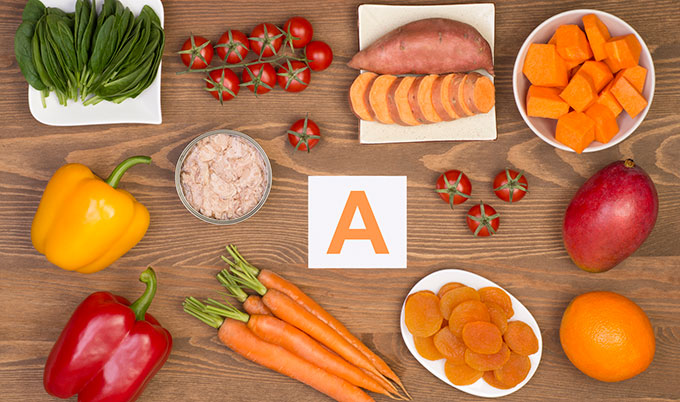Improved vitamin test could help millions
Improved vitamin test could help millions
Published on: 4 October 2016
A new technique that gives quicker and more accurate information about a person’s levels of vitamin A could help improve the health of millions.
Global health issue
Scientists at Newcastle University and Pennsylvania State University have developed an improved method of conducting the Retinol Isotope Dilution (RID) technique, reducing testing time from the 21 days currently needed to just four.
The improved test also allows for the first time the vitamin A status of an individual person to be determined. Previous RID tests were only able to evaluate the vitamin A status of groups due to large variations in vitamin A metabolism between individuals.
According to the World Health Organisation vitamin A deficiency is a public health issue in more than half of all countries in the world, especially in Africa and South East Asia. The vitamin is vital for the body and low levels can leave a person more susceptible to infection. It is estimated that vitamin A deficiency affects 190 million children under the age of five each year, and is the leading cause of childhood blindness in developing countries.
Good sources of vitamin A include eggs, dairy produce and liver, while beta-carotene – which is turned into vitamin A by the body – is found in yellow fruit and vegetables such as carrots, peppers and mango.

Significant development
Dr Georg Lietz, Senior Lecturer in Food and Human Nutrition, Newcastle University, said: “This new Retinol Isotope Dilution technique holds promise for getting a much better picture of the amount of vitamin A in the body in a much less invasive and time consuming way.
“Since most of the body’s vitamin A is stored in the liver, traditional methods of obtaining a direct measurement of vitamin A, such as liver biopsies, are not always possible or desirable and blood plasma tests are not sensitive indicators of vitamin A status in individuals.
“This new method will benefit not just an individual but also help to assess the effectiveness of large-scale public health supplementation programmes designed to improve vitamin A deficiency in millions of people around the world and is therefore an exciting and significant development towards eradicating this condition.”
The RID test involves the oral administration of a small dose of vitamin A, which is ‘labelled’ with a non-radioactive isotope. The ratio of labelled to unlabelled vitamin A in plasma is then identified to determine the total amount of vitamin A in the body. The test is more accurate than standard blood measurements of vitamin A, because plasma concentrations of vitamin A show limited responsiveness to changes in body stores of the vitamin.
However, the traditional RID test relies on taking multiple blood samples, and can take up to 21 days. The improved RID method developed by the research team is based on just one blood sample taken from a person after four days, as well as a modified equation for calculating vitamin A levels.
The work, which was funded by the Biotechnology and Biological Sciences Research Council (BBSRC) is published in the current issue of the Journal of Nutrition.
The study was carried out with adults but the research team say that further work is vital to assess the effectiveness of the new method in infants and young children, the biggest group affected by vitamin A deficiency. This work is currently on-going through studies funded by the Bill and Melinda Gates Foundation as well as the International Atomic Energy Agency in Vienna.
Reference: A retinol isotope dilution equation predicts both group and individual total body vitamin A stores in adults based on data from an early postdosing blood sample: Michael H Green, Jennifer Lynn Ford, Joanne Balmer Green, Philip Berry, Alan V Boddy, Anthony Oxley and Georg Lietz. DOI: 10.3945/jn.116.233676
Plasma retinol kinetics and beta-carotene bioefficiency are quantified by model-based compartmental analysis in healthy young adults with low vitamin A stores: Michael H Green, Jennifer Lynn Ford, Anthony Oxley, Joanne Balmer Green, Hyunjin Park, Philip Berry, Alan V Boddy, and Georg Lietz. DOI: 10.3945/jn.116.233486



